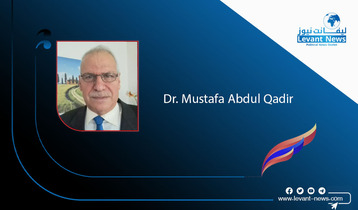-
Syria’s Battle for History

A famous phrase suggests that history is what is written by the victors. Syria’s war is almost ten years old and gone are the days when Assad’s future was in jeopardy. Indeed, despite the country’s ruined infrastructure and worsening economy last week saw the opening of a lavish museum in the coastal city of Latakia in memory of Bassel al-Assad, who died in a car crash in 1994.
Bassel was famously the heir apparent and was expected to take the Presidency on his father’s death. Instead an accident with a sports car suddenly sparked a rushed ascendancy to power for Bashar al-Assad. Bashar was seen by many initially as a reformist but the ‘Damascus Spring’ of opening up of freedoms was quickly followed by the ‘Damascus Winter’ and the road to the civil war of 2011.
The museum is reported to be 350 square metres with an additional garden of 8,000 square metres. It displays Bassel’s belongings as well as a collection of 60 pictures, trophies and medals belonging to him. The museum opening formed part of commemorative activities to mark the 50-year anniversary of Assad family rule
Such glitz and glamor are in stark contrast to those 80 per cent of Syrians who are currently impoverished. Hit by the perfect storm of war, pandemic and sanctions, the currency has largely collapsed fanning inflation, forcing families to cut back on meat and even fresh fruit. The cost of an average family shop is 90 per cent higher than it was six months ago, according to the UN.
Yet this contrast is evidence of exactly the kind of political power that dominates Syria today. There is no issue with a choice between memorialising a member of the ruling family to the cost of millions whilst the majority of the country go poor. It suggests that Syrians themselves are almost temporary actors on a stage in which Assad rule is permanent.
Few things speak of permanency than the brick and mortar of imposing memorials to a country’s history. Museums and what they display and the stories they tell are critical markers for the identity of a nation. They should be seen as instruments of power, but of power exercised over a longer time. Think of the tens of thousands of school children who will make their way to the museum in months ahead and how that number will rise into the millions over the years. Whilst the Crusader castles of old continue to crumble, these modern castles of identity will be kept pristine despite the rubble that dominates Syria’s cities.
Visitors to the museum will see and remember the Assad family as part of the fabric of the State, not humans who leadership require legitimacy based on anything practical but rather immovable and eternal almost deity like figures. In a sense museums such as these are part of the fight to prevent future civil uprisings emerging in the Syria of tomorrow by suggesting that the natural order of things dictates rule by the Assad family and to even think otherwise runs counter to it.
Meanwhile, the debate over reconstruction in Syria has somewhat stalled at a global level, but there was an important moment when Russia earlier this month signed 8 memoranda of understanding on energy, customs and education with Damascus and allocated $1 billion towards reconstruction.
Seeing the ordering of reconstruction will be more evidence as to what levers of power are considered most valuable by the Regime. Will it be housing and sanitation or instead tombs, memorials, statues or even more museums? The country is already dominated - in Regime controlled areas -by pictures of the leadership both those alive or dead. A trend of the powerful to mark their deaths as symbols of the rule of the present is not unique to Syria and a short trip south to the Pyramids can remind people of an even larger scale of commemoration from the past, yet for this to happen in the 21st century is a reminder of the political formaldehyde that embalms the sclerotic and catastrophic leadership of the current President in Damascus and explains the country’s current devastating malaise.

by : jamse danselow
Tags
You May Also Like
Popular Posts
Caricature
BENEFIT Sponsors BuildHer...
- April 23, 2025
BENEFIT, the Kingdom’s innovator and leading company in Fintech and electronic financial transactions service, has sponsored the BuildHer CityHack 2025 Hackathon, a two-day event spearheaded by the College of Engineering and Technology at the Royal University for Women (RUW).
Aimed at secondary school students, the event brought together a distinguished group of academic professionals and technology experts to mentor and inspire young participants.
More than 100 high school students from across the Kingdom of Bahrain took part in the hackathon, which featured an intensive programme of training workshops and hands-on sessions. These activities were tailored to enhance participants’ critical thinking, collaborative problem-solving, and team-building capabilities, while also encouraging the development of practical and sustainable solutions to contemporary challenges using modern technological tools.
BENEFIT’s Chief Executive Mr. Abdulwahed AlJanahi, commented: “Our support for this educational hackathon reflects our long-term strategic vision to nurture the talents of emerging national youth and empower the next generation of accomplished female leaders in technology. By fostering creativity and innovation, we aim to contribute meaningfully to Bahrain’s comprehensive development goals and align with the aspirations outlined in the Kingdom’s Vision 2030—an ambition in which BENEFIT plays a central role.”
Professor Riyadh Yousif Hamzah, President of the Royal University for Women, commented: “This initiative reflects our commitment to advancing women in STEM fields. We're cultivating a generation of creative, solution-driven female leaders who will drive national development. Our partnership with BENEFIT exemplifies the powerful synergy between academia and private sector in supporting educational innovation.”
Hanan Abdulla Hasan, Senior Manager, PR & Communication at BENEFIT, said: “We are honoured to collaborate with RUW in supporting this remarkable technology-focused event. It highlights our commitment to social responsibility, and our ongoing efforts to enhance the digital and innovation capabilities of young Bahraini women and foster their ability to harness technological tools in the service of a smarter, more sustainable future.”
For his part, Dr. Humam ElAgha, Acting Dean of the College of Engineering and Technology at the University, said: “BuildHer CityHack 2025 embodies our hands-on approach to education. By tackling real-world problems through creative thinking and sustainable solutions, we're preparing women to thrive in the knowledge economy – a cornerstone of the University's vision.”
opinion
Report
ads
Newsletter
Subscribe to our mailing list to get the new updates!






















